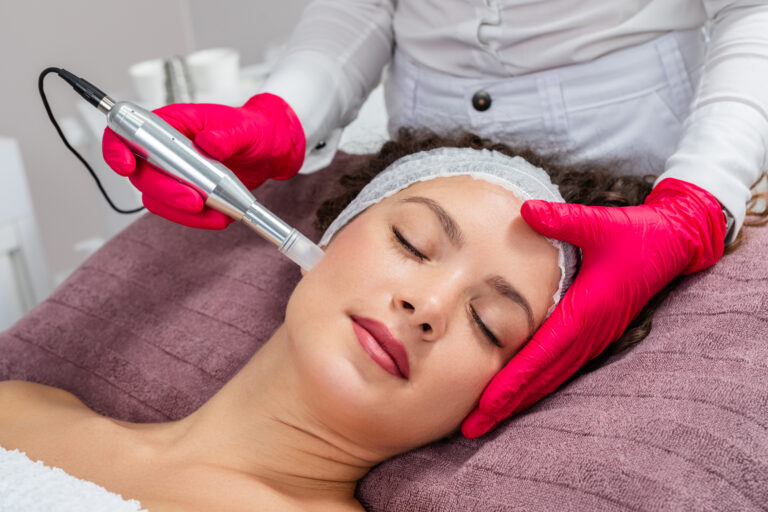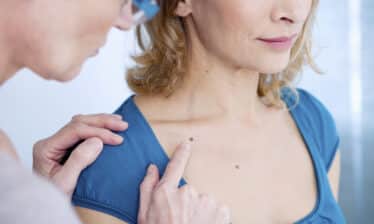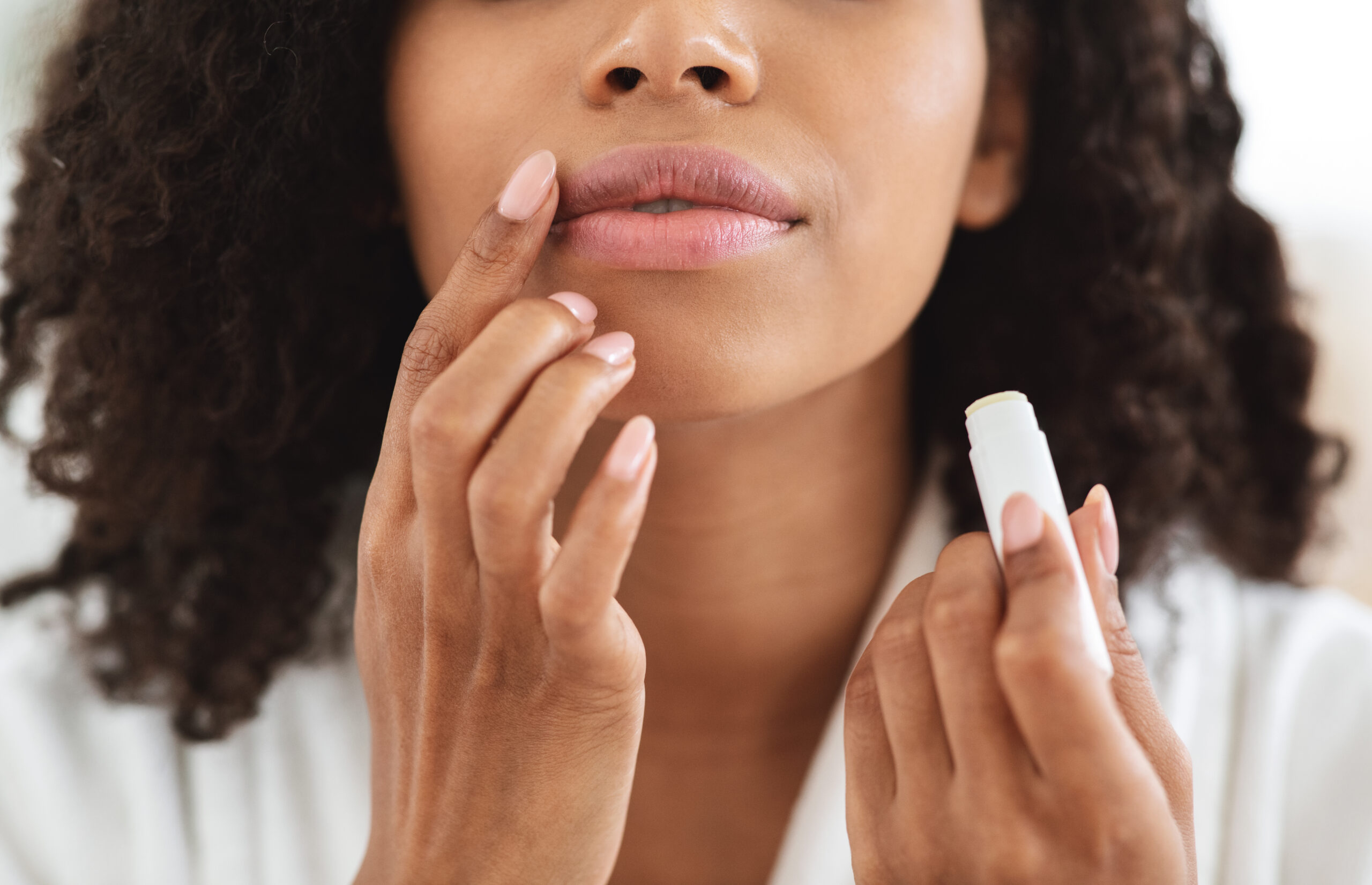As strange as it sounds, one of the best ways to refresh your skin is to puncture it with tiny needles. It’s called microneedling, a convenient and safe skin rejuvenation procedure.
Microneedling creates precise skin punctures using a specialized device, which is FDA-approved to treat wrinkles and acne scars in people 22 and older.1
Providers may use microneedling on its own or combine it with other treatment elements to make it more effective. Radiofrequency (RF) microneedling is one of those combined options.
What Is Radiofrequency Microneedling?
Radiofrequency microneedling uses fine needles and radiofrequency energy to create minuscule skin injuries. The microneedling device creates those tiny wounds, stimulating collagen production and the growth of healthy new skin.2
The device also delivers precise radiofrequency energy that heats the skin. The heat causes additional controlled damage, intensifying the effects of the procedure. More damage means more collagen production, which translates to thicker and healthier skin.
Because this new growth is smoother and tighter, it improves the skin’s overall appearance. This makes it an effective treatment for issues like:
- Wrinkles
- Fine lines
- Sagging skin
- Acne scars
- Other small imperfections
Because RF microneedling uses precision technology to deliver radiofrequency energy, it can treat some issues that would otherwise require more aggressive laser or chemical peel treatment.4
RF microneedling is appropriate for patients in overall good health with no allergies to local or topical anesthetic or stainless steel. It may not be appropriate for patients with medical issues such as:
- Autoimmune conditions
- Immune deficiencies
- Active skin infection or cold sores
- Facial rash
- Conditions such as eczema, vitiligo, or psoriasis
- Blood clotting problems
- Certain medications, including blood thinners or Accutane
If you have any severe or chronic health issues, consult a specialist before undergoing radiofrequency microneedling.5
How Does Radiofrequency Microneedling Work?
Radiofrequency microneedling is an outpatient procedure performed with a topical or local anesthetic. Most people have the procedure done in a doctor’s office.
Before the Procedure
Before you go in for your procedure, you’ll likely have a consult with the provider. You’ll answer questions about your general medical history and the results you expect from the procedure.
Your provider should also go over how many treatments to expect. Most people need several sessions to achieve optimal results.6
If you’re prone to acne or cold sores, your provider may ask you to take an antiviral medication in preparation. You may also need to cut back on or stop certain medications, including blood thinners.
Plan to avoid topical irritants like alcohol and salicylic acid before your procedure.
The Day of the Procedure
Before your RF microneedling procedure, your provider will clean your skin with alcohol and apply a topical anesthetic. Depending on your treatment plan, they may also use an injected local anesthetic.
Once your skin is numb, your provider will apply the microneedling device to the treatment area. The needle tip transmits radiofrequency waves into the tiny holes the needle creates.
You may feel a warm sensation or slight prickling, but it shouldn’t hurt. The whole procedure may take anywhere from 10 to 45 minutes, depending on the size of the treatment area and your treatment goals.
After the procedure, your provider may apply special solutions or balms to the area. Soothing serums are common to reduce post-treatment discomfort.
The Recovery Process
Most patients require minimal downtime after RF microneedling, but your skin may be more sensitive after treatment.7
Applying ice packs to the treatment area can reduce swelling and ease discomfort. Wear an SPF to protect your skin and use any antibiotic creams your provider prescribes.
Use only gentle skincare products for the first days or weeks after treatment. Products with harsher ingredients like retinol, menthol, and capsaicin may cause extra discomfort.8 Be ready to stop using these products until your skin has healed.
The Fine Print: Results Timeline and More
Radiofrequency microneedling is safe and minimally uncomfortable, but it’s important to have realistic expectations. Here’s what you need to know before getting started.
Will There Be Discomfort?
After the procedure, some patients may experience side effects like bruising, bleeding, redness, tightness, or peeling. These result from skin damage and usually go away on their own after a few days or weeks.9
Are There Other Side Effects?
Rarer side effects include skin discoloration, especially for people with darker pigmentation.10 If you have dark skin, ask your provider about their experience treating patients with your skin type. Overall, RF microneedling is safe for dark-skinned individuals, but it requires a skilled provider to perform with precision.11
When Will You See Results, and How Long Do They Last?
The results of radiofrequency microneedling come from the healing process. Your skin needs time to generate collagen and build new healthy skin tissue.
You may start to notice results a few weeks after treatment, but it can take months to see the full effect. But don’t worry — one of the benefits of RF microneedling is how long results last. Collagen growth and improved skin appearance often continue six months or more after treatment.12
How Much Does It Cost?
The cost of microneedling depends on your provider and where you live. Standard microneedling costs between $200 to $700 per session. For multiple sessions, which most people need, the cost ranges from $600 and $4,200.13
Radiofrequency microneedling sessions tend to be more expensive. One source reports costs ranging from $275 to $3,600.14
Pursuing Treatment: How to Start
If you’re interested in learning more about RF microneedling, speak with a qualified provider. You can also find detailed information about various skin treatment options on My Skin Treatment, which publishes up-to-date medically-reviewed articles like this.
For any questions about your unique situation, consult a skin care provider with microneedling experience.
SOURCES:
- U.S. Food and Drug Administration: “Microneedling Devices: Getting to the Point on Benefits, Risks and Safety.“
- Dermatologic Surgery: “Radiofrequency Microneedling: A Comprehensive and Critical Review.“
- Dermatology Times: “Microneedling plus radiofrequency effective.“
- Dermatology Times: “Microneedling plus radiofrequency effective.“
- U.S. Food and Drug Administration: “Microneedling Devices.“
- Dermatology Times: “Microneedling plus radiofrequency effective.“
- Dermatology Times: “Microneedling plus radiofrequency effective.“
- U.S. Food and Drug Administration: “Microneedling Devices: Getting to the Point on Benefits, Risks and Safety.“
- U.S. Food and Drug Administration: “Microneedling Devices: Getting to the Point on Benefits, Risks and Safety.“
- U.S. Food and Drug Administration: “Microneedling Devices.“
- Dermatology Times: “Microneedling plus radiofrequency effective.“
- Dermatologic Surgery: “Radiofrequency Microneedling: A Comprehensive and Critical Review.“
- Healthline: “How Much Does Microneedling Cost, and What Factors Into It?“
- RealSelf: “InfinitiRF: What You Need to Know.“






